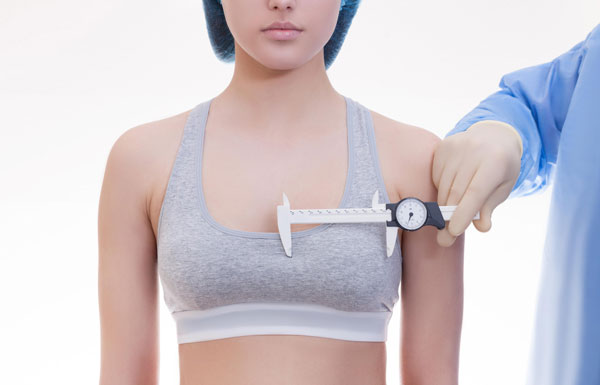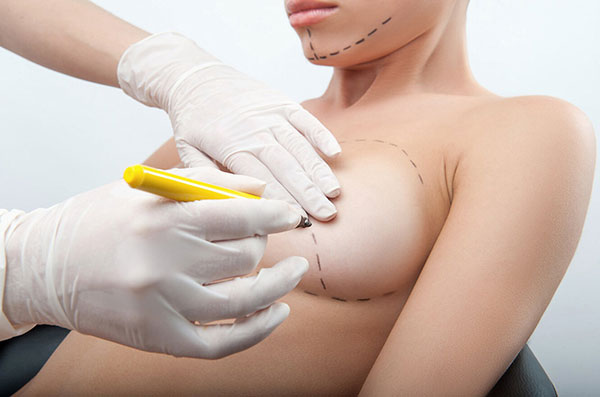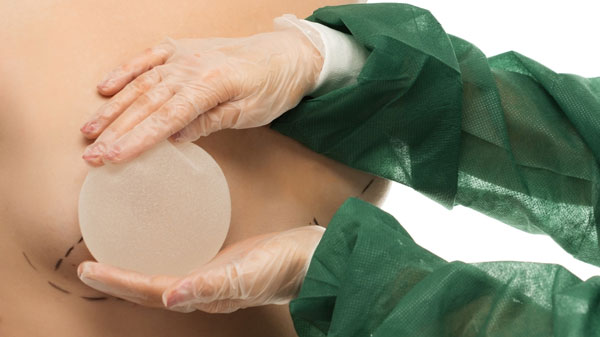Breast Implant in Iran

Breast Implants surgery in Iran
How much does breast implant cost in Iran?
Breast Implants surgery in Iran before and after
The cost of Breast Implants in Iran is around $2000, compared to its global cost of $6,000 thus, If you decide to have Breast Implants in Iran, reading this article can improve your knowledge about cost of Breast Implants in Iran to a great extent and help you to choose the best city and hospital to undergo Breast Implants in Iran.

General information about Breast Implants surgery in Iran
In this article we provide you with a comprehensive description of Breast Implants in Iran, the cost of Breast Implants in Iran and the best Iranian Breast Implants surgeons.
The following table describes general information about Breast Implants surgery in Iran including Breast Implants cost in Iran, recovery time, and to name but a few.
General Information |
|
Cost | $ 1500 - 2500 |
Anesthesia | General |
Hospital Stay | 1 Day |
Back to Work | 1 to 2 Weeks |
Duration of Operation | 1-2 Hours |
Minimum Stay in Iran | 7 Days |
About Iranian Surgery
Iranian surgery is an online medical tourism platform where you can find the best cosmetic Surgeons in Iran. All cosmetic surgeons working with Iranian Surgery specialize in plastic surgery and perform cosmetic surgeries in well-equipped hospitals, so after Breast Implants surgery in Iran you will face the least possible complications.
For more information about the cost of Breast Implants in Iran and to schedule an appointment in advance, you can contact Iranian Surgery consultants via WhatsApp number 0098 901 929 0946. This service is completely free.

Read more about : Bbl surgery Podcast with Dr. Afshan shah
Read more about : Facial Feminization Surgery
Read more about : Mommy makeover
All you should know about Breast Implants surgery
What is Breast Implant?
A breast implant is a prosthesis used to change the size, shape, and contour of a person's breast. In reconstructive plastic surgery, breast implants can be placed to restore a natural looking breast following a mastectomy or to correct congenital defects and deformities of the chest wall. They are also used cosmetically to enlarge the appearance of the breast through breast augmentation surgery. Women can get breast implants to make their breasts bigger and fuller.

Before Breast Implants
Are you a good candidate for breast implants?
The following are some common reasons why you may want to consider breast implants:
. You believe your breasts are too small for your body.
. You feel self-conscious wearing a swimsuit or form-fitting or low-cut tops.
. Clothes that fit your hips are too large at the bust line.
. Your breasts do not fill out your brassiere.
. Your breasts have become smaller or less firm after you've had children.
. Your breasts have become smaller due to weight loss.
. One of your breasts is noticeably smaller than the other.
If you are in good health, have a positive attitude and realistic expectations, you are most likely a good candidate for this procedure.
Read more about : Success Rate of Fat Transfer Breast Augmentation
Pros
. It is a long-term solution for achieving an ideal figure.
. You can look better in clothes and swimwear.
. You can have a more youthful-looking figure.
. You can feel more proportional
Cons
. Implants are not life time devices and may eventually need to be replaced.
. Normal surgical risks are involved.
. There is a rare condition called Breast Implant Related Anaplastic Large Cell Lymphoma (BI-ALCL) which you should discuss with your plastic surgeon.

. Some patients wish to remove implants later for a variety of reasons, which can include pain, asymmetry, lifestyle changes, or other symptoms.
These are the top pros and cons to weigh when considering breast implants. If you wish to focus on what is unique to you, please consult with your aesthetic plastic surgeon.
Read more about : Breast reduction size chart
Preparing for Your Procedure
You'll consult with a plastic surgeon about your preferences for size, feel and appearance of your breasts. The surgeon will describe specific types of implants — smooth or textured, round or shaped like a teardrop, saline or silicone — as well as options for surgical techniques.
Carefully review written information, such as the patient information from the manufacturer of the implant you'll be getting, and keep copies for your records.
In advance of your procedure, your surgeon will ask you to:
. Stop smoking at least six weeks before undergoing cosmetic surgery to better promote healing.
. Avoid taking aspirin and certain anti-inflammatory drugs that can increase bleeding.
. Regardless of the type of surgery to be performed, hydration is very important before and after surgery for safe recovery.
Breast implant is usually performed on an outpatient basis. Be sure to arrange for someone to drive you home after surgery and to stay with you at least the first night following surgery.
What factors might I consider before getting breast implants?
If you're thinking about breast augmentation or reconstruction, it's important to understand what it means to have breast implants. In addition to changing your appearance, keep in mind:
. Breast implants won't prevent your breasts from sagging. To correct sagging breasts, you might need a breast lift in addition to breast augmentation. This procedure can be done at the same time or later.
. Breast implants aren't guaranteed to last a lifetime. Implant rupture is a possibility. As many as 20 percent of women who have breast implants need to have their implants removed within eight to 10 years.
Also, your breasts will continue to change after augmentation — and certain factors, such as weight gain or weight loss, might further change the way your breasts look. Any of these issues might lead to additional surgery.
. Mammograms might be more complicated. If you have breast implants, routine mammograms will require additional, specialized views. At the time of your mammogram, tell the radiologist at the place where you have your mammograms that you have breast implants.
. You might need an MRI scan. The Food and Drug Administration recommends routine monitoring with ultrasound or MRI after five to six years, then every two to three years afterward. However, recent studies show that there's little data to support routine screening unless you have symptoms.
. Breast implants might hamper breast-feeding. Some women are able to successfully breast-feed after breast augmentation, while others aren't.
. Insurance might not cover breast implants. Unless it's medically necessary — such as the need for implant reconstruction after a mastectomy for breast cancer — breast augmentation for cosmetic reasons is not covered by insurance. Be prepared to handle any expenses that accompany breast augmentation, including related surgeries or future imaging tests.
. You might need additional surgery after breast implant removal. If you have your implants removed, you might need a breast lift or other additional surgery to help your breasts look better.
Read more about : Before breast augmentation
There are risks associated with all breast implants, including:
. Additional surgeries
. Breast implant associated-anaplastic large cell lymphoma (BIA-ALCL), which is a cancer of the immune system.
. Systemic symptoms, commonly referred to as Breast Implant Illness (BII)
. Capsular contracture (scar tissue that squeezes the implant)
. Breast pain
. Rupture (tears or holes in the shell) of saline and silicone gel-filled implants
. Deflation (with visible change to breast size) of saline-filled implants
. Silent (without symptoms) rupture of silicone gel-filled implants
. Infection
. Creases or folds in the implant
. Blood clots
. Bleeding
. Change in breast shape, volume, or sensation
. The implant rotating within the breast, resulting in an abnormal shape
. Adverse reaction to anesthesia
You should also be aware of a possible link between breast implants and a rare type of immune system cell cancer called anaplastic large cell lymphoma (ALCL).
A very small number of women who've had breast implants have developed ALCL in the scar tissue around their breast implants.
If you are of an age in which you get regular mammographic examinations, it will be important for you to select a radiology technician who is experienced in taking x-rays of augmented breasts. Additional views of your breasts are often required.
Your aesthetic plastic surgeon, in some instances, may recommend other types of examinations, such as ultrasound or magnetic resonance imaging (MRI). It is possible that the presence of breast implants could delay or hinder the early detection of breast cancer.
You can help minimize certain risks by following the advice and instructions of your board-certified plastic surgeon, both before and after your breast surgery.
What happens if an implant ruptures?
If an implant ruptures, the approach might vary depending on whether the implant is saline or silicone.
Ruptured saline implant
If a saline breast implant ruptures, the implant will deflate — causing the affected breast to change in size and shape.
Your body will absorb the leaking saline solution without health risks, but you'll probably need surgery to remove the silicone shell. If you want, a new implant can likely be inserted at the same time.
Ruptured silicone implant
If a silicone breast implant ruptures, you might not notice right away — or ever — because any free silicone tends to remain trapped in the fibrous tissue (capsule) that forms around the implant. This is known as a silent rupture.
Leaking silicone gel isn't thought to cause health problems, such as breast cancer, reproductive problems or rheumatoid arthritis. Still, a ruptured silicone breast implant might eventually cause breast pain, breast thickening, or changes in the contour or shape of the breast.
If this happens, your doctor will likely recommend surgical removal of the implant. If you want a new implant, it can usually be inserted at the same time.
Read more about : Bariatric surgery
During Breast Implants
Different Types of Breast Implant
The following options are available, depending on your medical history, body shape and aesthetic goals.
There are two basic types of breast implants: saline and silicone gel. Therefore, Patients have a choice between saline implants and silicone implants. Choosing the type of implant typically comes down to personal preference and the surgeon’s opinion.
. Saline-filled breast implants are filled with sterile salt water. Saline breast implants may be prefilled at a predetermined size or filled at the time of surgery to allow for minor modifications in implant size.
. Structured saline-filled breast implants are filled with sterile salt water, but contain a structure inside so they behave as if filled with soft, elastic silicone gel. This structure enables them to hold their shape better than traditional saline implants. Approved by the FDA and Health Canada in 2014, these implants have been available since 2015.
. Silicone gel-filled breast implants are filled with soft, elastic gel and are available in a variety of shapes and degrees of firmness. All silicone gel breast implants are pre-filled and patients may require a longer incision for larger implant placement.
. Cohesive gel silicone gel-filled breast implants, also known as “gummy bear” or “form stable” implants, are filled with a cohesive gel, made of crosslinked molecules of silicone, which makes them a bit thicker and firmer than traditional silicone gel implants. This enables them to hold their shape better. Approved by the FDA for use in the United States in 2012, these silicone implants have been available in much of the world since 1992.
Saline breast implants are available to women age 18 and older for breast augmentation and to women of any age for breast reconstruction.
Silicone breast implants are available to women age 22 and older for breast augmentation and to women of any age for breast reconstruction
Read more about : Breast implant
During the procedure
The procedure takes one to two hours. You will likely be given general anesthesia, during which you will be "asleep" and pain-free.
To insert the breast implant, your surgeon will make a single cut (incision) in one of three places:
. In the crease under your breast (inframammary)
. Under your arm (axillary)
. Around your nipple (periareolar)
After making an incision, the surgeon will separate your breast tissue from the muscles and connective tissue of your chest. This creates a pocket either behind or in front of the outermost muscle of the chest wall (pectoral muscle). The surgeon will insert the implant into this pocket and center it behind your nipple.
Saline implants are inserted empty and then filled with sterile salt water once they're in place. Silicone implants are pre-filled with silicone gel.
When the implant is in place, the surgeon will close the incision — typically with stitches (sutures) — and bandage it with skin adhesive and surgical tape.
After Breast Implants
After the procedure
Soreness and swelling are likely for a few weeks after surgery. Bruising is possible, too. Expect scars to fade over time but not disappear completely.
While you're healing, it might help to wear a compression bandage or sports bra for extra support and positioning of the breast implants. Your surgeon might prescribe pain medication as well.
Follow your surgeon's instructions about returning to regular activities. If you don't have a physically demanding job, you might be able to return to work within a few weeks. Avoid strenuous activities — anything that could raise your pulse or blood pressure — for at least two weeks. While you're healing, remember that your breasts will be sensitive to physical contact or jarring movements.
If your surgeon used sutures that don't absorb on their own or placed drainage tubes near your breasts, you'll need a follow-up appointment for removal.
If you notice warmth and redness in your breast or you run a fever, you might have an infection. Contact your surgeon as soon as possible. Also contact your surgeon if you have shortness of breath or chest pain.
Read more about : Breast reduction surgery
How long do breast implants last?
Although breast implants don’t actually expire, they aren’t guaranteed to last a lifetime. The average saline or silicone implants may last anywhere from 10 to 20 years.
However, many are removed sooner due to complications or cosmetic concerns. Up to 20 percent of people have their implants removed or replaced within 8 to 10 years.
Is one type of implant safer than the other?
Both saline and silicone implants are generally considered safe if your breast augmentation surgery is performed by a reputable, board certified surgeon.
Some believe that saline implants are safer because if the implant ruptures, most of the salt water will reabsorb into the body. Plus, with saline implants, you’ll know right away if it bursts and you can immediately take precautions.
While the research on this is mixed, some studies have seen a correlation between silicone implants and autoimmune diseases, such as rheumatoid arthritis and lupus. Both saline and silicone implants have silicone shells, so if you have an autoimmune disorder, you may want to avoid implants entirely.
Some experience a range of medical problems collectively called breast implant illness (BII). The symptoms range from fatigue to chronic headaches and brain fog, aches, pains, and gastrointestinal symptoms.
While there’s no definitive evidence that breast implants cause BII, many patients anecdotally report that removal of their implants makes them feel better.
There’s some correlation between a blood cell cancer called anaplastic large cell lymphoma (ALCL) and certain types of breast implants, primarily textured or rough surface implants. Breast implant-associated ALCL is typically detected 8 to 10 years after the implant is placed.
Signs that replacement or removal is necessary
The following complications may necessitate breast implant removal.
. Hardening
Many people develop capsular contracture, or hardened scar tissue around one or both implants.
This can also cause tightness, pain, tenderness, and abnormal cosmetic changes to the breast.
In some cases, hardening may happen more than once to the same breast.
. Saline rupture (leakage and deflation)
If a saline breast implant ruptures because of a tear or hole in the implant’s shell, it will begin to deflate like a balloon.
The saline in your implant will leak out and get reabsorbed by your body. This leak can happen all at once or slowly over the course of a few days.
The deflation may not become obvious until all of the saline leaks out. The affected breast will lose its size and shape and look dramatically different from your other breast.
Breast implant ruptures are rare in the first few years, but the risk does increase over time.
. Silicone rupture (silent rupture)
Silicone implants can also rupture.
Silicone gel is much thicker than saline. When a silicone implant ruptures, the gel will often stay inside the implant or surrounding scar tissue.
Because of this, ruptured silicone implants often go unnoticed. That’s why silicone ruptures are also known as silent ruptures.
Most people don’t experience any symptoms. When symptoms are present, they can include:
. Decreased breast size
. Hard knots
. An uneven appearance of the breasts
. Pain or tenderness
. Tingling
. Swelling
. Numbness
. Burning
. Changes in sensation
Although the exact rate of silicone rupture is unknown, it’s estimated to be somewhere between 2 and 12 percent.
Some implants rupture immediately, some after several years, and others after 10 years or more.
. Rippling and palpability
Rippling occurs when the implant develops wrinkles or ripples. Palpability refers to the ability to feel these ripples when you touch your breast. In some cases, these changes can also be seen through the skin.
If you see or feel wrinkling in your implant, you may want to consider replacing or removing it.
. Change in position
Breast implants don’t prevent your breasts from sagging as you age. Gravity is still going to take its toll. Weight gain and loss can also cause stretching and sagging of the breasts.
You may also notice that one breast hangs lower than the other, or that your nipples point in different directions than before.
If you’re bothered by these changes, getting a breast lift or implant replacement may help return your breasts to their previous appearance.
What to expect with implant removal
Any qualified plastic surgeon can remove your breast implants. It doesn’t need to be the same surgeon who did your first surgery.
During an initial consultation, the surgeon you choose will evaluate the state of your current implants and discuss your surgical options.
Depending on your preferences, your surgeon can do any of the following:
. Implant removal alone
. Implant removal and breast lift
. Removal of hardened or lumpy tissue
. Implant replacement with or without breast lift
Sometimes, implant removal alone can lead to cosmetic abnormalities. This includes:
. Deflation
. Sagging
. Dimpling
. Asymmetry
Because of this, your doctor may recommend replacing your implants with implants of a different size or shape.
Depending on the specifics of your procedure, you may be able to return home the day of your surgery. Recovery time differs for everyone.
Read more about : Breast augmentation recovery
Breast Implants Surgeons
How can I find the best Breast Implants surgeon in Iran?
Breast Implants surgeons in Iran can make your body more appealing. Breast Implants surgeons in Iran can also help you in making your final decision about what type of breast Implants is more suitable for you.
It is important that you seek the assistance of experienced and skilled breast Implants surgeons in Iran who have provided a suitable condition for people with limited budgets to do breast Implants in Iran easily. It is worth explaining that the quality provided by Iranian surgeons is far higher than other countries including Turkey and India.
Breast Implants surgeons in Iran, have performed numerous procedures annually which make breast Implants surgeons in Iran more experienced than other countries’ plastic surgeons, due to high demand and low costs of breast Implants in Iran, thousands of people travel to Iran every year to undergo breast Implants in Iran with the best breast Implants surgeons at an affordable and reasonable price.
Plastic surgery hospitals in Iran
Tehran hospitals
- Moheb Kosar Hospital
- Imam Khomeini Hospital
- Ebnesina Hospital
- Parsian Hospital
- Pasteurno Hospital
- Kasra Hospital
- Treata Hospital
Shiraz hospitals
- Mirhoseini Hospital
- Ordibehesht Hospital
- Mir Hospital
- MRI hospital
- Dena Hospital
- Abualisina Hospital
- Ghadir Mother and Child Hospital
Mashhad hospitals
- Imam Reza Hospital
- Mehregan Hospital
- Hashemi Nezhad Hospital
- Farabi Hospital
- Mehr Hospital
- Sina Hospital
- Bentolhoda Hospital
Breast Implants cost in Iran
The cost of Breast Implants in Iran is between $1500-2500.
7 factors affecting the cost of breast Implants in Iran
- Incision location/type
- Type of implant you select
- Brand
- Type of anesthesia or sedation
- Qualifications/expertise of specialist
- Implant size
- Materials used


12 Comments
Should I ask How Long Do Implants Last before everything?
While breast implants aren’t marketed to be lifetime devices, there is no need to replace them unless issues arise. Ask the surgeon about the longevity of implants based on his or her experience. Some manufacturers offer a lifetime replacement policy on the implants themselves
I feel ripple in my breast augmentation,is it normal or no?
All breast implants ripple and saline filled implants ripple more than silicone gelimplants. The question is can you feel or see the ripples. … Since you have ripplesnow it is because there is not enough soft tissue over your implants to prevent you from feeling and seeing the ripples.
Is it possible that breast implant get replaced?
Some will last a lifetime, while others have complications within seven years. On average, the majority of implants last 10-20 years without complications. Recent FDA reports indicate that about 20% of women will have their breast implants repaired or replaced within 10 years of the original surgery.
I have breast implant for 11 years,What happens if you don’t replace breast implants?
The vast majority of women who get implants do not need to replace them. … This is not a problem with silicone implants, but can happen to saline breast implants over the course of time. Capsular contracture – After breast implants are placed, the body forms a “capsule” of scar tissue around it.
Hi doctor I wanna know that Is there an alternative to breast implants?
There’s a new alternative to implants that uses your own fat cells to enhance breast tissue. It’s called fat grafting, and while it is an involved process of multiple injection procedures, the end result does not involve any surgery or scarring.
There are several types of breast prosthesis and which is the best option?
Breast prosthesis is generally divided into two types of silicone and saline prosthesis, silicone type is more similar to normal breast tissue than saline prosthesis. If you want your breasts to become extremely large naturally, you can use saline prostheses, but the doctor’s approval is very effective in choosing the type of prosthesis.